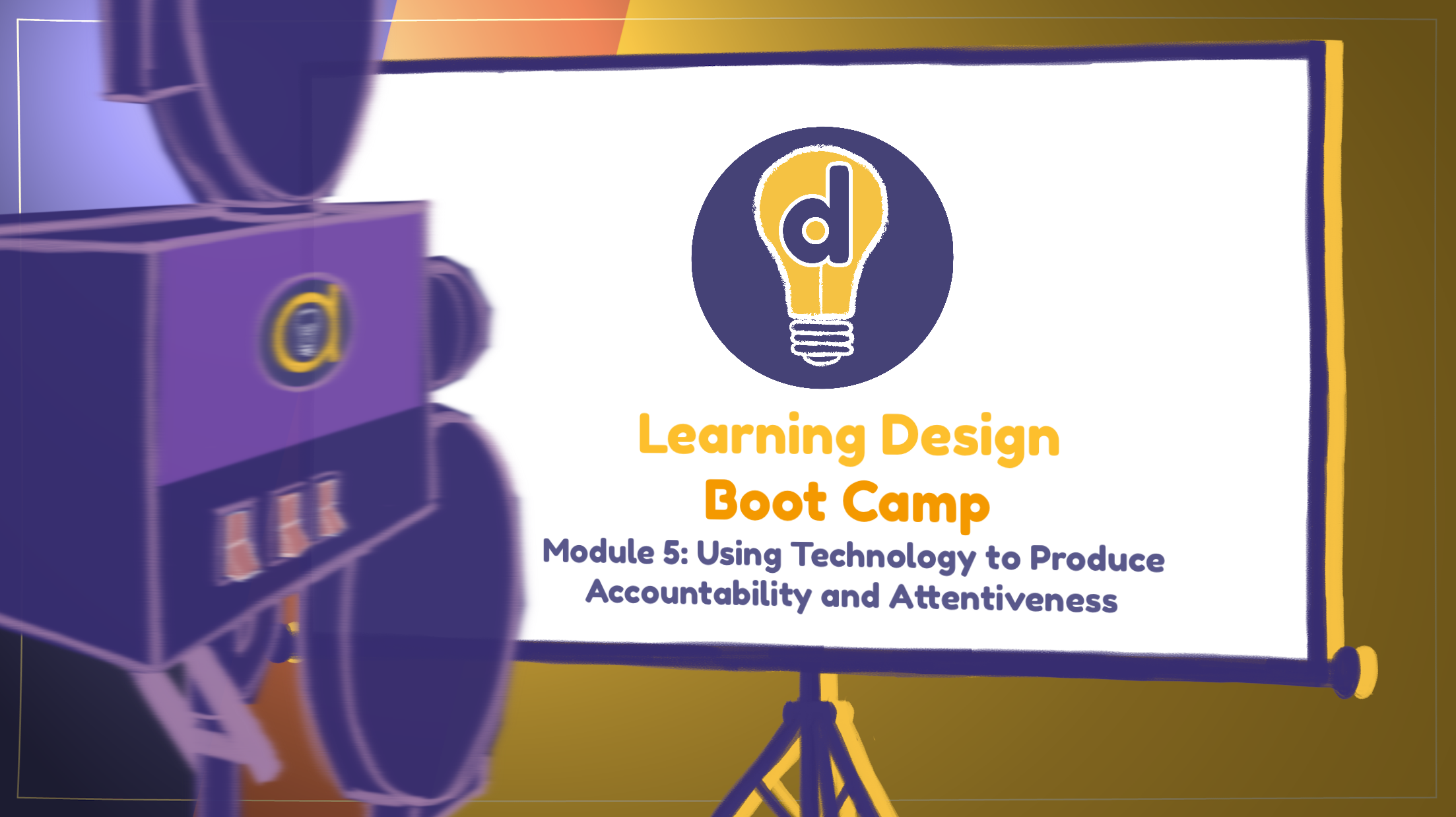5.5 Using technology to produce accountability and attentiveness
Okay, welcome back! Now that you’ve started building your toolkit of digital technologies, we can look at how we can use these tools to drive accountability and attentiveness in learning design. Accountability and attentiveness are important levers in learning design, and learning designers need to know how and when to use these levers to keep learners engaged and motivated. We’re going to examine the relationship between them and then we’ll look at how technology can amplify them.
Accountability
Firstly, let’s look at accountability. Accountability in learning design has a specific meaning, and it’s this: ‘what is going to make your learners do what you’re asking them to do?’
Let’s take this bootcamp as an example. You might LOVE the content, and I hope you do, but there would be little incentive for you to keep going if the Ding team weren’t looking at your work and giving you feedback. By asking you to create and show your work, we are making you accountable for your learning. If this course was simply a bunch of videos with no activities, it’s highly unlikely you would have made it this far. We know this by the fact that over 90% of people who sign up to Massive Open Online Courses drop out and don’t finish – the issue is learners aren’t held accountable for what they’re learning.
Attentiveness
This brings us to attentiveness. Attentiveness is the act of looking at what learners are doing, and making sure they know they’re progress is being monitored. Attentiveness drives accountability. In a physical classroom, attentiveness looks like the tutor or facilitator walking round the room and checking everyone is on task, then providing assistance as needed. But in an online course, you can’t walk around the room. So how can we produce attentiveness?
The answer is this: we use technology to make learning visible. Getting learners to write on a blog makes their learning visible. Asking learners to respond to a question, or share something in Slack or on a discussion board makes learning visible. Asking learners to respond to a task in a Google Doc makes learning visible.
Once this happens, you can produce attentiveness by responding to what learners have produced. You might do this by commenting on their work, ‘liking’ it, or even just adding a smiley face or the two-eyed emoji to show you’re looking at it. These simple gestures show learners that you’re being attentive, and this in turn produces accountability.
Too many learning experiences make the teaching visible, but not the learning. As I’ve mentioned before, if this bootcamp just involved me talking at you, you’d have dropped out long before now. It’s only because you’re making your learning visible through your worksheets, videos and Slack comments that we can see what you’re learning.
In our podcast with Tom Whitford from the Curio learning design agency, we discussed the importance of using digital technologies to produce accountability. In the podcast, Tom also explains why accountability is so important in learning design. You can hear Tom’s advice about attentiveness here.
Motivation
In order to make learning visible, we also have to motivate learners to do things. By showing learners we are being attentive and by making them accountable for what they’re learning, we produce motivation. Motivation is integral to effective learning at all levels, but for adult learners it’s especially important. Adult learners can easily choose not to continue with a learning experience unless they feel motivated to do so. So as learning designers, we have a responsibility to design for accountability and attentiveness in order to create a learning experience that compels learners to continue. If we simply present learners with a load of content, it doesn’t matter how great it is – after a while, they’ll just stop consuming it because there is nobody to hold them accountable for what they’re learning.
One of our fabulous podcast guests, Geraldine Murphy talked about the importance of motivation in learning design. If you’d like to listen to her advice, check out her podcast here.
We’ve nearly reached the end of the technology module. We’ve covered a lot of ground, but there’s one more concept I’d like to explore with you. Head to the final lesson, and we’re going to look at how we can design an effective learning journey across different technology platforms.


